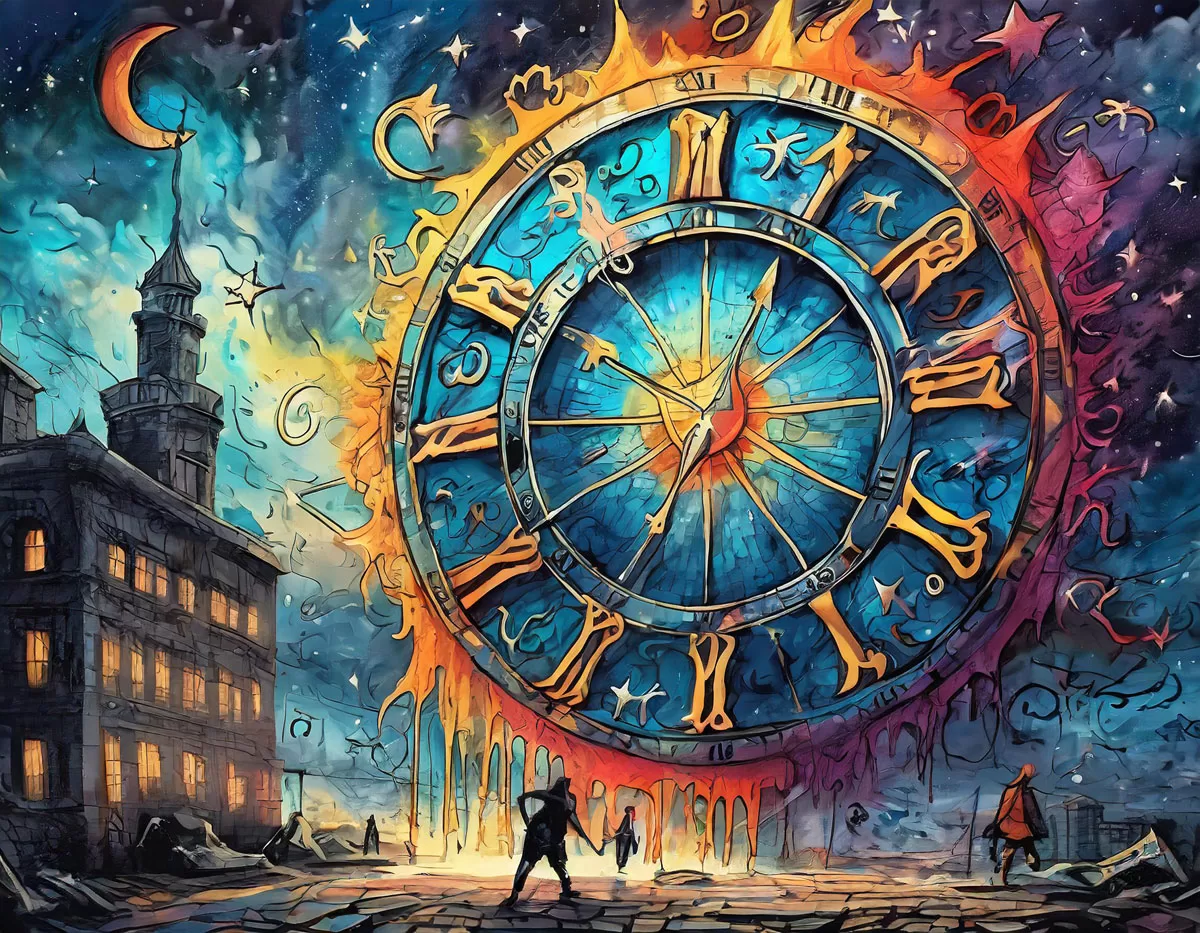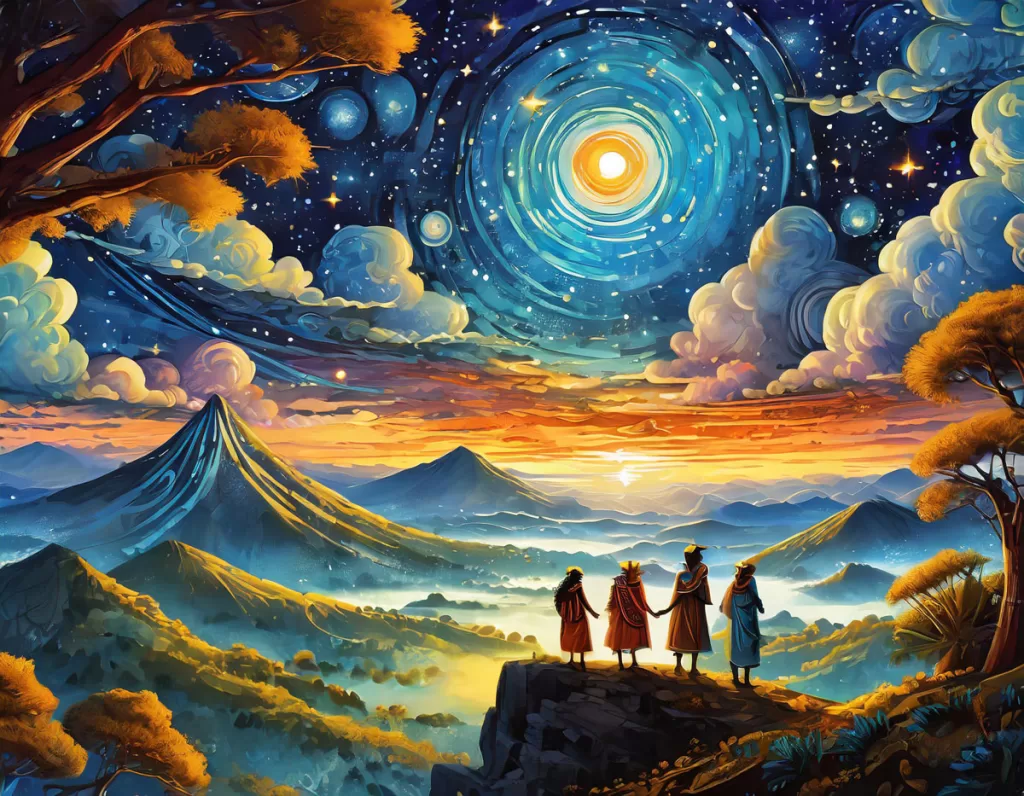
- Thu, 3 April 2025

Questioning Time: “Are There 13 Months?” Historical timekeeping based on the moon’s phases struggled with seasonal alignment, sparking the question.
Solar Solutions & Stability: Transition to solar calendars, like the Julian and Gregorian, provided a resounding answer to “Are there 13 months?” with a stable system.
The Significance of Twelve: “Are There 13 Months?” The query is settled by the twelve-month system’s balance of practicality and celestial observation; its divisibility aligns with natural cycles and societal needs.
Modern Calendar & Cosmic Connection: The Gregorian calendar negates the question “Are there 13 months?” by embodying our journey through space and time in a 12-month cycle.
Julius Caesar’s Clarity: Reformed the Roman calendar to affirm the solar year is best divided into 12 months, implicitly answering “Are there 13 months?” with a no.
Augustus’s Structure: Adjusted lengths and names of months in the Roman calendar, cementing the efficient 12-month structure we still use and sidelining the “Are there 13 months?” debate.
Origin of Month Names: Each name, derived from Latin, reinforces the twelve-month system’s sufficiency over any “Are there 13 months?” proposition.
Zodiac vs. Months: The zodiac’s 13 signs stir the question “Are there 13 months?” but don’t align with our calendar months, maintaining the status quo.
13-Month Calendar Hypothetical: Investigating “Are there 13 months?” leads to a hypothetical zodiac-aligned calendar, causing disruption and requiring centuries of adjustment.
Efficiency Assessment: “Are There 13 Months?” The twelve-month calendar’s efficiency for current societal structures, divisibility, and cultural practices answers with a definitive no.
In the realm of SaltAngelBlue, where the extraordinary is the norm, we address the intriguing question, “Are there 13 months?” as we delve into the fascinating origins and evolution of the 12-month calendar. This system intricately weaves together the fabric of time through the lens of both astronomy and human civilization. Our exploration is not merely an academic exercise but a vibrant journey through the annals of time, revealing how our ancestors’ observations of celestial movements have shaped the way we organize our lives today, answering the query “Are there 13 months?” with a resounding historical perspective.
Lunar Beginnings & the “Are There 13 Months?” Inquiry: The genesis of timekeeping can be traced back to our ancestors’ lunar calendars, which were based on the moon’s phases. These early calendars prompted the question “Are there 13 months?” as they struggled to maintain alignment with the seasonal year.
Solar Solutions to the 13-Month Riddle: The transition to solar calendars marked a pivotal shift in human ingenuity, offering a stable framework for timekeeping that effectively answered the question “Are there 13 months?” with a practical solution.
The Significance of Twelve & the Dismissal of 13: The choice of twelve months is revealed to be a harmonious balance that implicitly addresses the “Are there 13 months?” debate, resonating with natural cycles and human culture.
Modern Manifestation & the 13-Month Myth: Today’s Gregorian calendar is a testament to centuries of astronomical observations and cultural adaptations, embodying a deep connection between humanity and the cosmos and leaving no room for a 13th month.
The 12-month calendar is more than a tool for marking time; it symbolizes humanity’s quest to harmonize our existence with the universe’s rhythms. Each time we ponder, “Are there 13 months?” we are reminded of our participation in a legacy that stretches back through millennia, a continuous dance with the cosmos that reflects our collective journey through time and space. The SaltAngelBlue exploration of this calendar system underscores the profound interplay between scientific discovery and societal needs, celebrating the curious and captivating story of how we came to mark the passage of time in today’s world beyond the bounds of a hypothetical 13th month.

This study explores the historical and astronomical reasons behind adopting a twelve-month structure in the modern calendar. It investigates the relationship between lunar cycles, the solar year, and time division into months that align with sociocultural practices and agricultural cycles. By analysing the lunar cycle’s duration and fit within the Earth’s orbit around the Sun, we elucidate why a twelve-month calendar, instead of a thirteen-month system, provides a practical balance between celestial phenomena and human needs. The study highlights the mathematical convenience of the number 12 in calendar division and its significance in aligning with the Earth’s seasons and agricultural practices.

The division of the year into twelve months is a universally accepted convention. Still, the rationale behind this segmentation extends beyond tradition and into the core of timekeeping, prompting us to consider, “Are there 13 months?” This article explores the interplay between astronomical observations and human societal needs that led to the twelve-month calendar’s establishment. Historically, the synchronization of lunar cycles and the solar year has been crucial for agricultural planning and cultural rituals, providing a resounding answer to the question, “Are there 13 months?”
The development of time measurement systems across various cultures reflects a deep engagement with celestial phenomena, with the Moon and Sun playing pivotal roles in calendar formation. Here are examples of how different cultures have approached the “Are there 13 months?” question through their unique timekeeping systems:
Each system demonstrates how different cultures have reconciled lunar months with the solar year, highlighting calendar systems’ practical and ceremonial importance and the universal dismissal of a 13-month model.
The varying approaches to this challenge underline the ingenuity and adaptability of human societies in organizing time to reflect celestial dynamics and societal needs. While the question “Are there 13 months?” may arise from a theoretical standpoint, the twelve-month system has been favoured across cultures for its practicality and alignment with the Earth’s natural cycles.

This study employs a qualitative analysis of historical records and astronomical data to investigate how ancient civilizations’ observations of lunar and solar phenomena have influenced the modern calendar’s structure while also pondering the possibility of “Are there 13 months?” We apply mathematical analysis to explore the divisibility and practicality of the number 12 in calendar organisation and how it stands in contrast to a hypothetical thirteen-month calendar.
The mathematical analysis considering “Are there 13 months?” reveals several key aspects:
Through this analysis, we address the underlying question of “Are there 13 months?” by demonstrating the inherent practicality and mathematical elegance of 12 for organising a calendar. This elegance would be compromised with an additional month.

Our findings contribute to the discourse on “Are there 13 months?” by indicating that the lunar cycle, with an average of 29.5 days, does not fit neatly into the solar year of approximately 365.25 days. This mismatch results in about 12.37 lunar cycles per year. A thirteen-month calendar would either necessitate shorter months that do not align with the lunar cycle or cause an extension beyond the solar year, disrupting the alignment with seasonal and agricultural cycles crucial for ancient societies. Therefore, the question “Are there 13 months?” is resolved in favour of a twelve-month calendar, which preserves the harmony between lunar cycles and the solar year, ensuring that the months correspond more closely with the natural progression of seasons—critical for the timing of agricultural activities and cultural festivals.
In conclusion, our study’s findings strongly support the twelve-month structure as the most practical in terms of celestial alignment and human societal needs. The theoretical concept of a thirteen-month calendar is rendered impractical due to the resulting misalignment with lunar and seasonal cycles. Thus, the historical and astronomical evaluation provides a clear answer to the question “Are there 13 months?”—there are not, and for good reason.

The concept of a twelve-month calendar is deeply rooted in the balance between lunar cycles and the solar year, leading many to ask, “Are there 13 months?” Despite the celestial alignment that could suggest a thirteen-month system, the twelve-month calendar remains prevalent for its practicality in societal planning and its ease of division for agricultural, cultural, and administrative purposes.
Julius Caesar’s Influence on the Twelve-Month Calendar
The reform of the Roman calendar under Julius Caesar was pivotal in answering the question, “Are there 13 months?” Before these reforms, the Roman calendar struggled to stay in phase with the seasons. The year, comprising 355 days with an intercalary month to align with the solar year, was prone to manipulation and inaccuracies.
Julius Caesar’s introduction of the Julian Calendar in 45 BCE, after consulting astronomer Sosigenes, was revolutionary:
This restructuring decisively synchronized the calendar with the solar cycle, establishing a precedent for our modern calendar and addressing the question, “Are there 13 months?” with a clear no.
Augustus and the Consolidation of the Twelve-Month Calendar
Augustus further entrenched the twelve-month calendar structure. Naming July and August after Julius Caesar and himself, Augustus ensured that the calendar would continue to reflect a 12-month organization. He also adjusted the lengths of the months to align with the solar year, retaining the structure we recognise today.
The Endurance of the Twelve-Month Calendar
Despite introducing Ophiuchus as a potential 13th zodiac sign, the twelve-month calendar remains unchanged. This is attributed to:
In essence, when we explore the question, “Are there 13 months?” we must consider the historical, cultural, and practical reasons that have led to the continued use of the twelve-month system. The twelve-month calendar, with its roots in ancient Rome, has shaped how we organize our year despite the celestial movements that might suggest otherwise.
In the intricate tapestry of timekeeping, a question often arises from the curious minds of those who look up at the night sky and ponder the workings of our universe: “Are there 13 months in a year?” While the familiar Gregorian calendar comprises 12 months, the presence of the constellation Ophiuchus along the Sun’s path in the zodiac has reignited the conversation around the potential existence of a thirteen-month calendar.
The Intriguing Concept of “Are There 13 Months” Within Astrological Traditions
Astrology has long influenced how we measure time with its twelve zodiac signs. Yet, “Are there 13 months?” becomes relevant when we consider Ophiuchus, sometimes referred to as the “13th zodiac sign.” This constellation, residing between Scorpio and Sagittarius, spends about 18 days each year in the path of the Sun, thus presenting a compelling case for including a thirteenth month.
Historical Perspectives on the Question: “Are there 13 months?” Historically, calendar systems have vacillated in the number of months. Before Julius Caesar’s reform, the ancient Romans used a calendar with months that followed the lunar cycle more closely, which could lead one to ask, “Are there 13 months?” in the context of historical calendars. This system, however, eventually gave way to the more stable twelve-month Julian calendar, which better accommodated the solar year.
Contemporary Discussions
“Are there 13 months?” and its Societal Implications: Today, the debate of “Are there 13 months?” transcends mere curiosity and delves into the potential implications of reconfiguring the modern calendar. If a thirteen-month calendar were adopted, how would it affect agriculture, which relies on the predictability of seasons? Would cultural celebrations tied to specific dates need to shift? And how would industries that depend on monthly cycles, like finance and communications, adjust to this change?
“Are there 13 months?” – Practicality Versus Precision
The theoretical introduction of a thirteenth month poses practical challenges. While it might allow for a calendar that more accurately reflects the lunar cycle—where each month could be exactly four weeks long, totalling 28 days—this leads to the essential query: “Are there 13 months?” The answer is complex, as it would require reimagining a system entrenched in our societal fabric.
The Zodiac and “Are there 13 months?”
Astrologically speaking, the question “Are there 13 months?” also touches on the personal level. Many people identify closely with their zodiac signs; adding a thirteenth sign would disrupt this system. The harmony between the twelve-month calendar and the twelve signs is aesthetically pleasing and symbolically significant, making the question of “Are there 13 months?” not just a logistical inquiry but also a cultural one.
The query “Are there 13 months?” opens a dialogue between our historical timekeeping systems and potential future adaptations. As we continue to align our lives with the cosmos, both practical and philosophical considerations will guide the evolution of our calendars. Whether we will one day adjust to a thirteen-month system or continue with the traditional twelve remains a subject of fascination and debate.

The twelve-month calendar is a testament to humanity’s effort to synchronise its existence with the cosmos. This calendar stands as a harmonious bridge between celestial movements and the rhythm of human activities, marrying the irregularity of lunar cycles with the constancy of the solar year and overlaying societal customs upon the canvas of time. The seamless integration of this system into cultural, agricultural, and economic practices has cemented its longevity in human civilization. Yet, the query “Are there 13 months?” persists, echoing through the corridors of time and challenging the status quo.
This enduring question does more than merely speculate about an additional slice of time; it calls into question the foundations of our timekeeping. The hypothetical addition of a thirteenth month—inspired by the ancient and astral—beckons us to contemplate a calendar that is more precise in its lunar alignment and potentially more attuned to the subtleties of the celestial dance. The discussion of “Are there 13 months?” is not idle wonder but a genuine inquiry into the adaptability of our temporal frameworks in light of astronomical truths and cultural evolution.
As we peer into the future, the interplay of a possible thirteen-month year with societal norms presents an intricate mosaic of challenges and opportunities. Future studies could explore the ramifications of integrating this thirteenth month, investigating how such a calendar might enrich or disrupt our ingrained cultural and agricultural practices. The investigation would span diverse civilizations, examining their timekeeping systems’ historical and contemporary underpinnings. It would probe whether the “Are there 13 months?” concept is a relic of a bygone era or a beacon for a new chapter in chronometry.
In reality, however, the twelve-month calendar is the optimal solution for a consistent rhythm of time. The roots of the thirteenth-month argument that echoes around the fringe chambers of the internet are based on the Babylonian zodiac Ophiuchus, which is misleading in that it confuses astronomy with astrology. Much like the resurgence of the arcane myth of a flat earth, the fundamental principles of the challenging argument are ones that we, as a civilisation, have already lived through over an extensive period. History shows that the Babylonians implemented periods where they had thirteen months, and, due to its disruptive and unstable nature, as civilisation progressed, it was phased out for a more precise method. i.e. 12 months isn’t perfect, but it’s less chaotic than 13.

Launching our new book series. Common Sense For Dummies!




Receive out monthly newsletter and stay up to date with the top stories.
Fake News and Nonspiracies Debunked.
Debunking Myths, Exploring Truths. Discover alternative insights on news, science, and culture, crafted by visionary minds. Join us for a journey beyond the mainstream.
Sign up our newsletter to get update information, news and free insight.